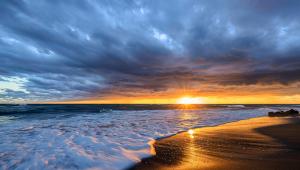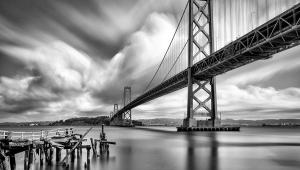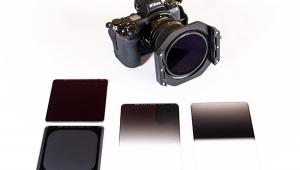The Most Overlooked Feature In Today’s Amazing Cameras? It’s You!
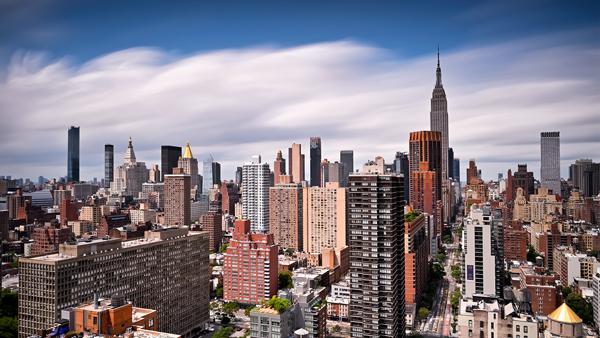
(Editor’s Note: You can read ”On the Road” columnist Deborah Sandidge’s other columns here).
Most of my columns for this website concern the ideas and purposes behind the photographs I take. I always include information about the technology used to achieve the photos, which could be as basic as the f/stop chosen to direct your attention, or the use of a ND filter to make a long exposure possible. That approach is not incidental or coincidental; the stories are planned along those lines because my ideas come first, and technology’s purpose is to support those ideas.
I set out to create images for specific reasons, even if they are only along the lines of, “Well, this is an interesting scene; now let’s see what I can do with it.” That’s the beginning: here’s what interests me; here’s what I feel about it. Now, how can I use the camera to communicate? Nothing starts without my idea or purpose. I believe the art of photography is not in the technology, and it’s not in what I see: it’s in what I can make others see, and in the creative purpose and control of the elements of an image. Technology is the means to that achieving that.
Simply, we are the most important features of our cameras. Here’s how that works.
Rocky Mountain Highlight
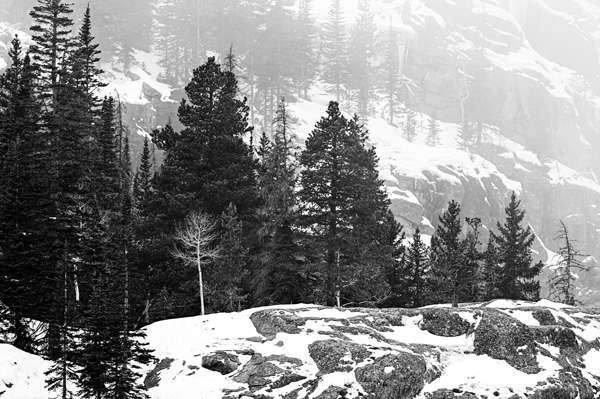
What caught my attention at this spot in Rocky Mountain National Park, CO, in late November a few years ago was a solitary aspen surrounded by big conifers. The idea was to somehow make it the obvious center of interest, so my first decision was not to shoot in color—it would interfere and distract. My choice was the graphite picture control, which would give the image a heightened contrast and direct viewers’ attention to what I wanted them to see: a small tree standing out among larger ones.
My overall thinking about picture controls is that they serve picture ideas, and they are all about picture creativity. I use them sparingly. I don’t scroll through them to see various effects. That’s for the photographer in search of an idea, which is very different from what I do.
Flight Plan

Not too long ago, this shot was impossible, at least for me. I was barely able to see it in real time—the swift takeoff of the tufted titmouse from the feeder in a gesture-filled flurry of wings and tail feathers. By the time I’d press the shutter, the bird and the moment were gone. Then a firmware upgrade to my Z9 provided pre-release capture (Nikon calls it Pre-Release Burst). In a nutshell, with a halfway press of the shutter button, as I’m seeing real-time motion in the viewfinder, the camera begins buffering a sequence of images before the full press of the shutter.
This is the kind of photo you take just to see what it looks like because you can’t see all the details in real time. It’s also the kind of photograph that makes you believe in magic. You can read about my indoor/outdoor bird photography setup in an earlier column here.
Flower of a Greater Power
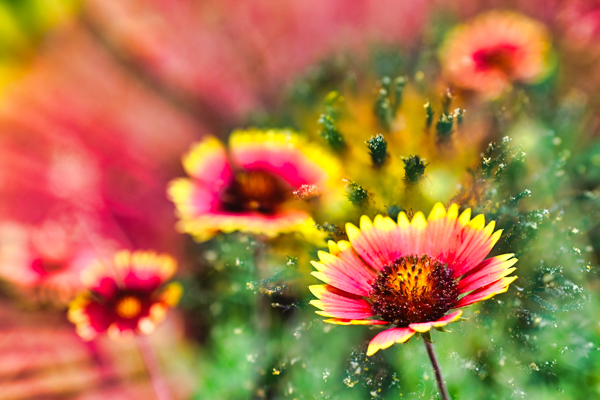
What I didn’t want was a literal this-is-a-flower picture. Colorful, sure, but frankly, too ordinary. I was looking for flower plus—something that the image explores, and that viewers could explore. That was possible because of my Z5’s double-exposure capability and a Nikkor 105mm f/2.8 Z lens, a macro with a 1:1 reproduction ratio that would get me as close as 6.3 in. Two shots later I had what I wanted. The first photo was the sharp image; the second, the impressionistic overlay.
Distant Lightning
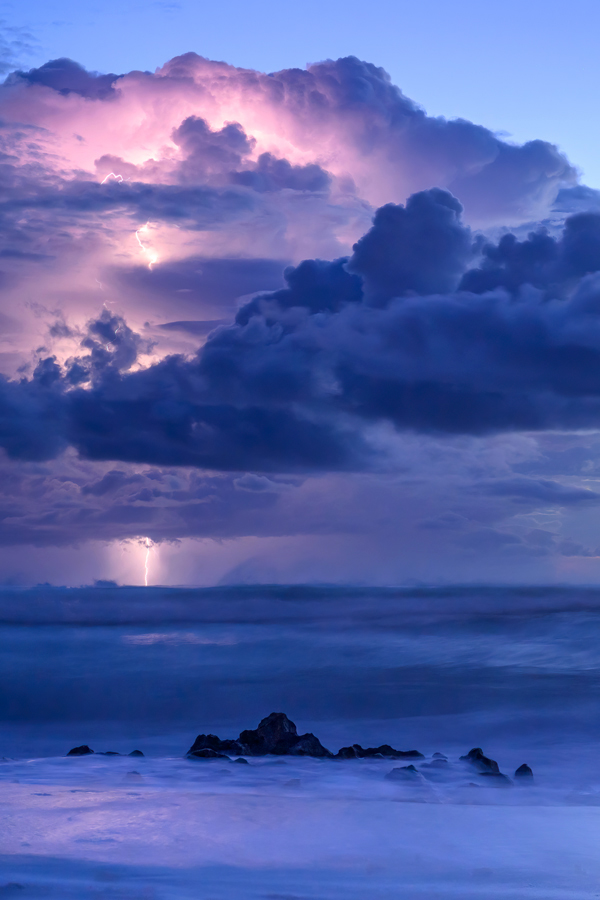
I arrived an hour before dawn at Tequesta, FL, to scope out the terrain, get an idea for the composition and consider lens choice. When I saw lightning flash, my goal was clear: get it. Problem was, it was unpredictable, and so my tech decisions included setting up a five-second exposure, then boosting the ISO to 800—which I knew was high enough to give me enough light gathering for this time of day at that exposure. You’re seeing one lightning strike in three sections: up top, slightly below, and below mid-frame. I also set the white balance for natural light auto, which I knew would tend to capture the purple/blue tones I wanted.
Time Out

Many of the catchphrases for New York City suggest its tough, driving nature—like “the city that never sleeps”—but I decided to contrast its hard-edged skyline with a long-exposure cloud painting, the result of a great vantage point, a tripod, and a four-minute exposure. By controlling the light and the speed of the clouds, I could ease things up a bit while allowing the city to maintain its edge.
Hawk Eye
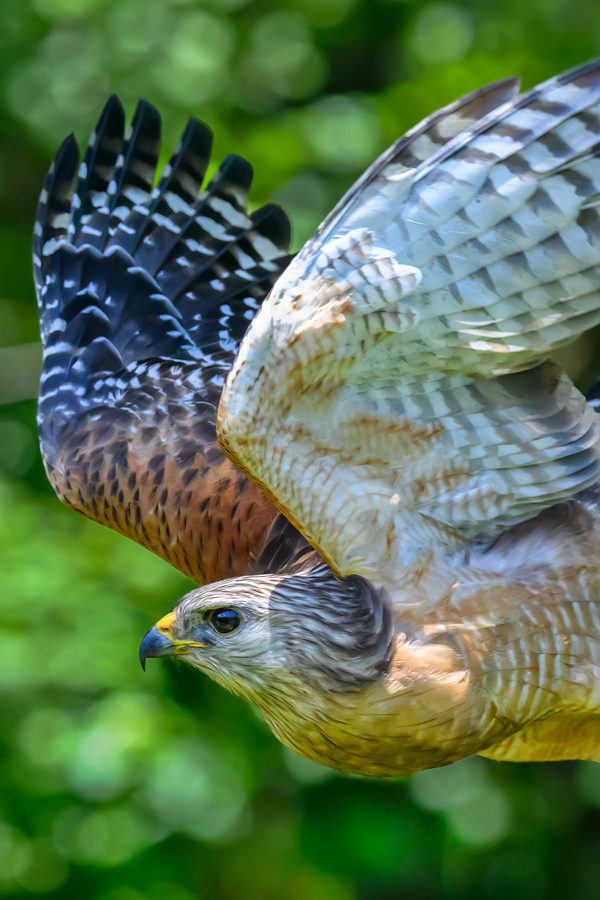
The red-shouldered hawk was just beginning to take off from the backyard feeder, and the idea of the photo was pretty basic: get the bird taking off, in focus, and stay with it as it flies. In the past this could be hit or miss, but now it’s another day of bird-feeder photography as my Z9’s Animal Eye AF locked on to insure sharp focus. This was the best of three photos in which the hawk was well positioned in the frame.
Social Media Links
Instagram: https://www.instagram.com/debsandidge/
Twitter: https://twitter.com/DebSandidge
Facebook: https://www.facebook.com/debsandidge.
- Log in or register to post comments
